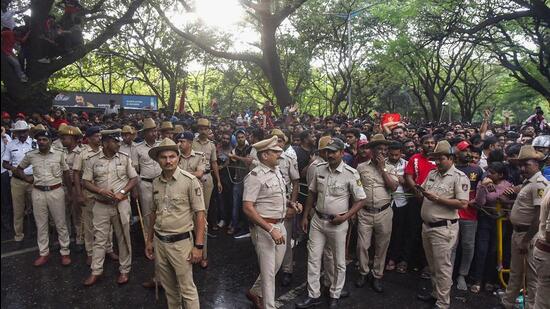Now Reading: Rupee Under Pressure Ahead of RBI Policy Decision and US Jobs Report
-
01
Rupee Under Pressure Ahead of RBI Policy Decision and US Jobs Report
Rupee Under Pressure Ahead of RBI Policy Decision and US Jobs Report

The Indian rupee continues to trade on the back foot as markets brace for the Reserve Bank of India’s (RBI) monetary‑policy verdict and fresh US employment data later this week. Persistent dollar strength, rising oil prices, and cautious foreign‑portfolio flows have kept the currency near record‑weak levels, prompting import‑heavy businesses—especially in Tier 2 hubs such as Coimbatore, Ludhiana, and Surat—to hedge more aggressively.
Recent Currency Moves
After slipping past 84.90 against the US dollar in late May, the rupee has hovered in a narrow but fragile range. Traders cite steady month‑end corporate demand for dollars, while the RBI’s spot interventions have only partially stemmed the slide.
Why the RBI Meeting Matters
Most economists expect the central bank to hold the repo rate at 6.25 percent, but commentary on liquidity and inflation will be key. Any hint of a shift toward looser policy could weigh further on the rupee by narrowing the yield gap with US treasuries.
US Jobs Data: A Second Wild Card
Friday’s non‑farm payrolls could reinforce expectations that the Federal Reserve will delay rate cuts. A stronger‑than‑expected print would likely firm up the dollar, adding near‑term pressure on emerging‑market currencies, including India’s.
Impact on Tier 2 Importers and Consumers
Smaller textile exporters in Tiruppur and auto‑component firms in Rajkot say a weaker rupee raises input costs and squeezes margins. At the retail level, imported cooking oil and smartphone prices have inched up, nudging local inflation expectations.
What Analysts Say
Currency strategists see support for the rupee around 85.20 but caution that a break above that level could open the door to 86. Short‑term relief hinges on a dovish Fed signal or softer crude prices, both of which appear unlikely in the immediate term.
Conclusion
With the RBI’s policy tone and US labour data looming, the rupee looks set for a choppy week. Businesses and households—particularly in India’s smaller industrial cities—will watch closely, recognizing that exchange‑rate swings can swiftly pass through to prices and profit margins.
Trade War Poses Bigger Threat to Emerging Markets Than COVID‑19, Warns IMF’s Gita Gopinath
Escalating global trade tensions now threaten emerging economies more than the COVID‑19 shock did, according to IMF First Deputy Managing Director Gita Gopinath. Speaking at a policy forum, she argued that prolonged tariff battles and supply‑chain fragmentation could sap growth, fuel inflation, and derail poverty‑reduction gains across the developing world—India included.
From Pandemic Recovery to Protectionist Risks
While vaccines and fiscal support helped many countries rebound from the pandemic, new export curbs and strategic‑sector tariffs risk undoing those gains. Gopinath noted that cross‑border investment flows have already slowed as firms reassess supply routes.
Why Emerging Markets Are Vulnerable
Developing economies rely more heavily on open trade for jobs, technology transfer, and foreign exchange. In India, Tier 2 manufacturing clusters—ranging from auto parts in Aurangabad to pharmaceuticals in Visakhapatnam—depend on predictable overseas demand and imported components.
Potential Macroeconomic Fallout
Higher input costs could stoke consumer inflation, limiting central banks’ room to cut rates. Meanwhile, dwindling export orders would pressure current‑account balances, weaken currencies, and raise borrowing costs for infrastructure projects.
Policy Options for India and Peers
Gopinath urged emerging markets to diversify trading partners, develop regional value chains, and streamline customs procedures to buffer shocks. For India, she highlighted initiatives such as Production‑Linked Incentive (PLI) schemes and the push for free‑trade agreements with the EU and Gulf nations as steps in the right direction.
Voices from Tier 2 Cities
Industry bodies in Cochin and Indore stress that tariff‑linked price spikes already hurt small exporters, many of whom operate on thin margins. They welcome state‑level schemes offering freight subsidies and quicker GST refunds but call for longer‑term certainty in trade policy.
Conclusion
Gita Gopinath’s warning underscores that the next big risk for emerging markets may come not from health crises but from economic nationalism. For India’s policymakers—and for businesses in its rising Tier 2 corridors—building resilience through diversification and domestic capacity will be critical to sustaining the growth momentum achieved after COVID‑19.























